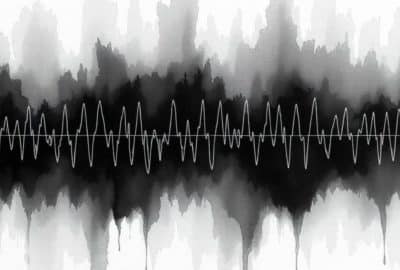Rogue Planet
Monday 11th Mar 2013, 3.30pm
Ossie’s adventure through the Milky Way galaxy takes us to the cutting edge of scientific discovery. Driven by the robotic exploration of our own Solar System and the rapid discovery of extrasolar planets (planets around stars other than the Sun), much of what we thought we knew about the formation of planets is being challenged and changed. So what can we say for sure about the science encountered along the way?
Let’s start with an easy question: Is time travel really possible?
In the real Universe, time travel’s ruled out by Einstein’s theory of relativity, as well as all those paradoxes involving shooting your own grandfather. And while we’re dealing with our artistic licence, nothing in reality can travel faster than light – unless a mysterious device is delivered to your door.
Did the Solar System really have a fifth giant planet?
Simulations of the early Solar System suggest that some of the features we see today like the tilts of the orbits of Jupiter and Saturn make more sense if there was an extra body in the outer Solar System in the early days; however, things were undoubtedly complicated, and there may well be other explanations for what we see around us.
However, astronomers are also now convinced that there are millions, and perhaps even hundreds of millions, of free-floating planets wandering the galaxy between the stars – it seems possible that these might be planets like Sol i, expelled from their systems by gravitational interactions. Many more detailed computer simulations and a better understanding of planet formation will be needed before we can be sure.
What is causing the chaos that engulfs the Solar System in the animation?
The orbits of the planets aren’t completely consistent over time – they are pulled about by each other’s gravity and so things change slightly as the years go by. Computer simulations suggest that it’s possible that around 800 million years ago these small changes produced what’s called a resonance between Jupiter and Saturn, so that, for example, for every two complete orbits Saturn made Jupiter – faster because it’s closer to the Sun – made three.
This arrangement meant that the two planets often lined up in exactly the same place, and this repeated alignment would have given a repeated gravitational kick to the rest of the Solar System. If the models are to be believed, then Uranus and Neptune might have been pushed outwards, scattering the Kuiper belt and perhaps bombarding the inner Solar System with debris as shown in the animation. This has become known as the ‘Nice model’ – named for the city where it was first dreamt up.
Were the Moon’s craters really formed by this sort of process?
The lunar craters were certainly all formed by impacts, but evidence for the kind of dramatic bombardment shown here is relatively recent. It was analysis of rocks returned from the Apollo missions to the Moon that first led to significant support for this idea, which eventually became known as the ‘late heavy bombardment’. The coincidence in timing with the disruption predicted by computer simulations is certainly suggestive, but not all the evidence is in yet. For example, if the Moon was being subjected to such a battering then so was the Earth, and yet the rocks which survive on Earth from that period show no sign of such dramatic events. Because of the effects of weather, any impact craters would long since have vanished but we might expect chemical signatures to survive within the rocks.
One difficulty that has haunted scientists for decades is the trickiness of distinguishing a late heavy bombardment from a dramatic end to a longer period of repeated impacts. Other models suggest other causes, too. It seems possible that earlier in the Solar System’s history Jupiter drifted inwards, disrupting the inner rather than the outer Solar System. We are really just at the beginning of being able to piece together this important part of our planet’s history – and more discoveries of extrasolar systems and exploration of our own will help.
How do we know these planets exist?
In most cases, the dazzle from their parent stars prevents planets in other systems from being seen – the stars are just too bright and the planets too faint. Instead, we rely on indirect methods. For some, such as Alpha Centauri B b, we can detect the very small wobbles of the star induced by the planet’s gravity as it orbits around it. These wobbles are small – perhaps amounting to only metres per second – but by studying the star’s light carefully it is possible to measure things that accurately.
While accurate, this method can only be applied to a single star at a time. Most planets are discovered via an alternative method, which looks for the slight ‘blinks’ that occur when a planet passes in front of its parent star. Telescopes such as NASA’s Kepler satellite can monitor hundreds of thousands of stars at once, and computer software can identify repeated patterns of blinks that indicate the presence of a transiting planet. These computers aren’t completely accurate, however, and many planets (including PH1 – the planet with four stars in the animation) have been discovered by human volunteers inspecting data on the Planet Hunters website. No special training is required, so give it a go – you might discover something rather special.
Where do the planets’ names come from?
The committee of the International Astronomical Union who decide such things has decreed that they aren’t going to try and provide individual names for extrasolar planets – instead, we’ll (prosaically, if unromantically) stick to catalogue numbers. So Sol i would be the 9th planet (after Sol a, b..) around the star Sol – our own Sun. This cataloguing also explains the names of the other planets we visit, including Alpha Centuri B b!
Further information:
Teaching Resources:
Find out more:
Find your own planet with Planet Hunters
Stargazing Lectures from the University of Oxford
Kepler announces new planet candidates
Radial velocity and transit simulators (require Flash)




